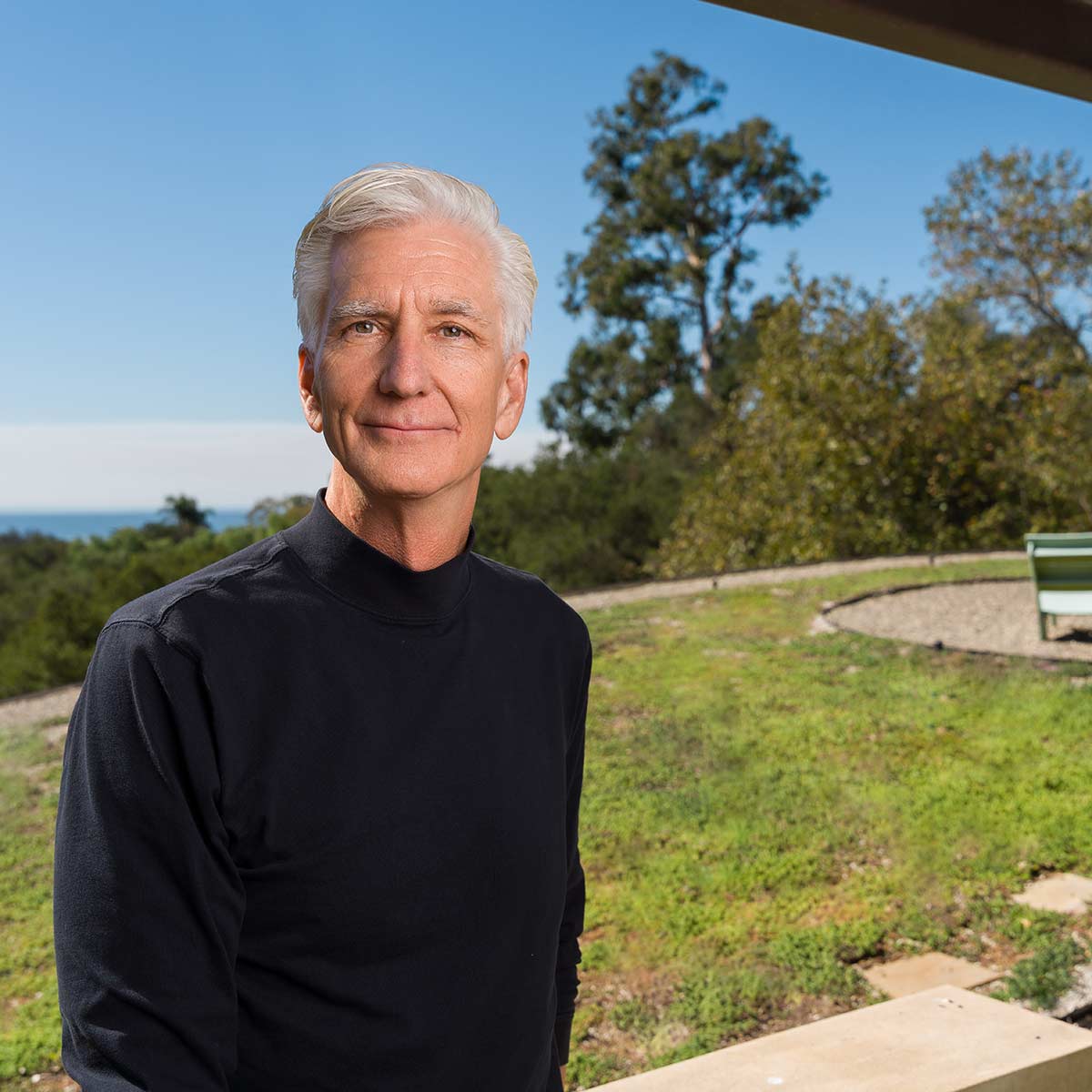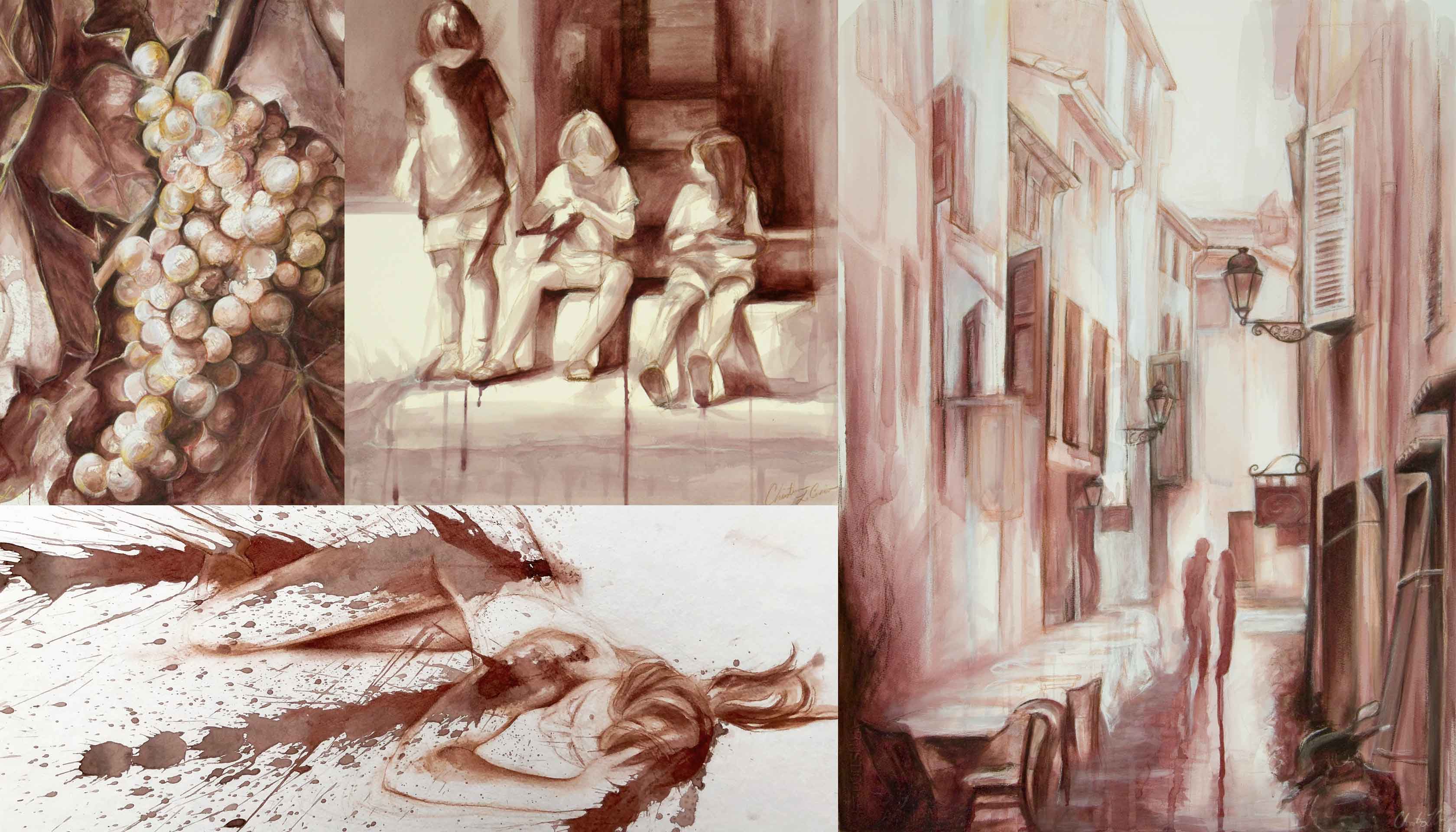“Doing things that align with nature” is the best way to carve out a sustainable existence, according to Ken Radtkey ’83. And he should know — he has spent his entire career focusing on how to work with the land. Radtkey cofounded Blackbird Architects in 1995, and for the past 26 years he and his team have created award-winning buildings, homes and landscapes that merge beautiful design and sustainable practices.
Architect Ken Radtkey ’83 stands atop the green roof at Coyote House, a LEED Platinum residential design.
Photo Credit: Jeff Liang
Simply Sustainable
Ken Radtkey Offers Tips for Making Your Home Eco-Friendly

Ken Radtkey
Photo by Jeff Liang
While Radtkey incorporates tenable practices into the structures and gardens he creates and remodels, you don’t have to be an eco-architect to reduce your dwelling’s carbon footprint; there are myriad ways to affect change that don’t take much time and are inexpensive. In fact, according to Radtkey, “Making improvements to an existing home or structure and working with what you have is really important. I see it as a bigger picture approach, much better than building new,” he says. “What we’ve seen is that the first 50 percent of what you can change is low hanging fruit and you should go after that.”
For example, a west-facing window might make a room a hot box thanks to the burning afternoon sun. Rather than replacing the windows with expensive double-paned tinted glass, think about planting a tree. And if you don’t want the summer sun pouring in but do want the mild winter sun rays to hit that same window, then plant a deciduous tree, which loses its leaves in the cold months.
Other “passive approaches” to sustainability include making sure your water heater is working to its full potential, utilizing rain barrels, and strategically pruning trees and plants. “I think it’s like jiujitsu — use the least amount of your effort to get the most effect in the world,” Radtkey says.
High-tech devices such as the Flume can also help you reach your eco potential. The Flume is a water sensor that attaches to your meter and tracks every drop of water used. “This smart device is really informative,” he explains, “because it gives you an alert for as small as 1/100th gallon per minute used. Something that is running 24/7, even if it’s only a tiny dribble, adds up to a lot of water.”
Solar panels are also a good implement if you have the capital, he notes, though they are pricey. “[They] can pay for themselves over time, as they will offset electricity bills.”
Radtkey says the best way to achieve sustainability is to use “anything that connects you to nature.”
Sustainability Tips
Landscaping
Use landscaping to enhance warm and cold spots. Plant trees, for example, to shade windows that receive lots of sun.
Rain Barrels
Gathering any water or moisture that comes off your roof is gold, according to Radtkey, and great for the garden.
High-Tech Devices
Get a water meter smart device such as the Flume water monitor. Knowledge is power.
Reuse/Recycle
Make a compost pile and/or a worm bin. “Soil is full of carbon and it's great for your plants,” says Radtkey.
Walk Scores
If you are buying a house, find out its Walk Score, which is a grading system related to the abode’s proximity to amenities like grocery stores, etc. “Building in the foothills is wonderful and enjoyable but is not necessarily the most sustainable,” Radtkey notes.


